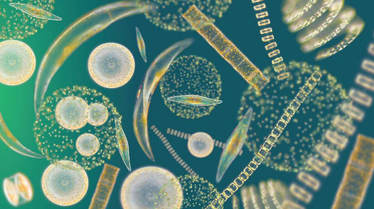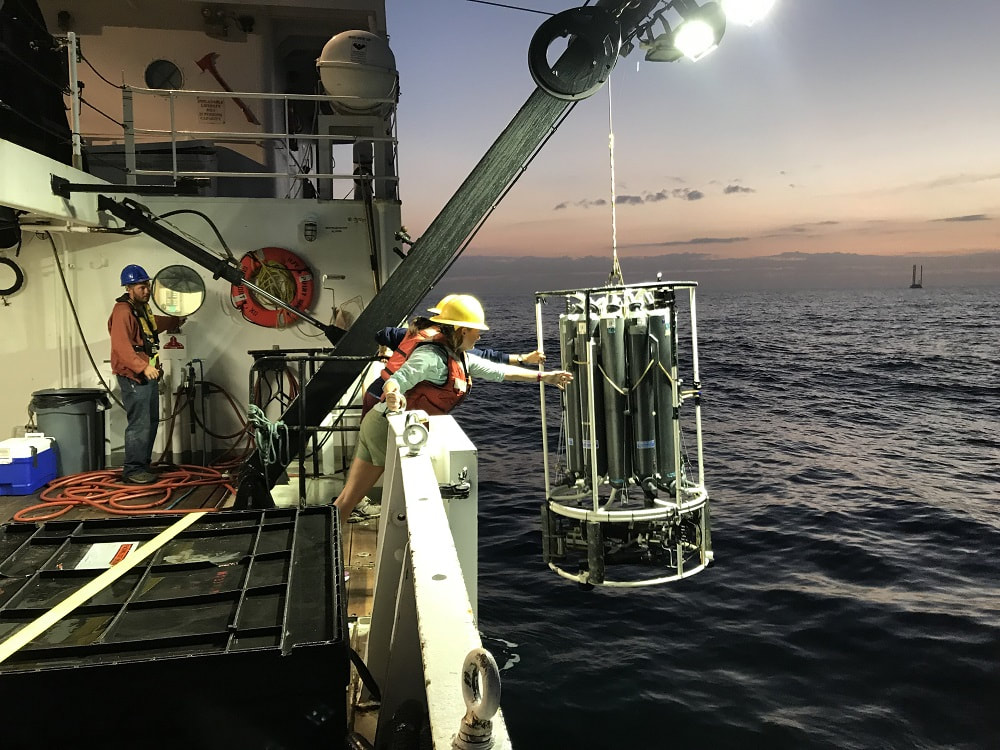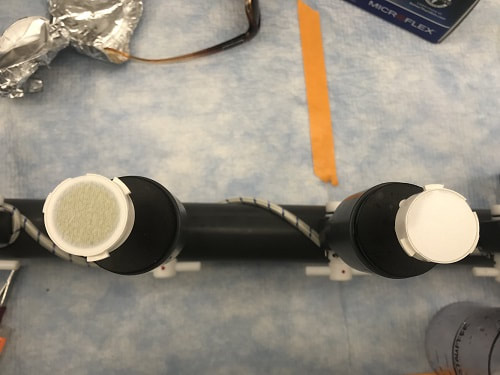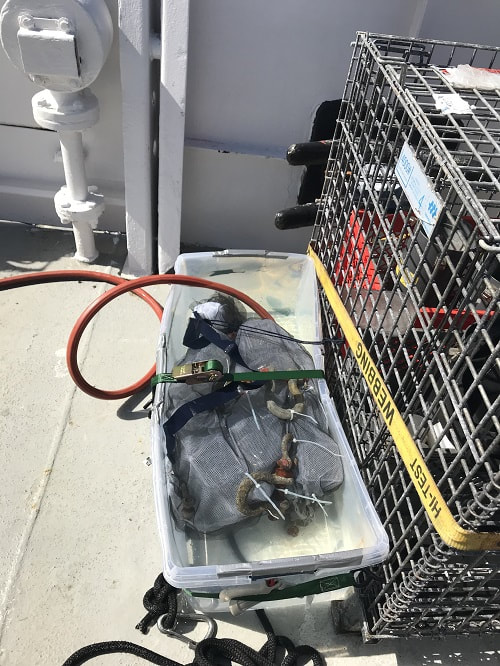 An example of some of the phytoplankton found in the ocean, image credit unknown An example of some of the phytoplankton found in the ocean, image credit unknown Posted by Beth Stauffer, Assistant Professor of Biology, UL Lafayette Our cruise is focused on plankton in the Gulf of Mexico, but this term really describes a lifestyle of “wandering” or “going with the flow” of the currents more than a group of organisms. Gabrielle Corradino, a PhD student with Dr. Astrid Schnetzer at NC State University, and I are studying the tiniest of these - and the ones at the base of the food web - on this cruise. Much like plants on land, microscopic phytoplankton are the photosynthetic members that use light and carbon dioxide to produce carbohydrates (or sugars) and oxygen. They do this really well: more than 50% of the oxygen on our planet is produced by phytoplankton in the ocean! This primary production also makes phytoplankton the base of the marine food web. Zooplankton, fish, even large animals like dolphins and whales, rely on these food webs! Our project is specifically focused on understanding the effects of Hurricane Harvey and its floodwaters on planktonic food webs in the Gulf. Therefore, we have to quantify who is there, since different species of phytoplankton can support different consumers. The main instrument we use to do this is the CTD (conductivity-temperature-depth), which is a suite of sensors mounted to a cage that is lowered over the side of the ship. The cage also holds bottles which can be triggered to collect water at specific depths. We collect water from these bottles for analyses back in the lab using microscopes, a flow cytometer (to look at the really small stuff), and based on their DNA, which can tell us what’s there without us even seeing it. Check out Gabrielle’s Instagram (@marchoftheplankton) to see this instrument in action! We are also running experiments while on the ship to measure how much consumption is going on by two different groups of zooplankton: small single-called microzooplankton that can grow almost as fast as their prey, and larger copepods that you might recognize from Sponge Bob Square Pants! These experiments are done in bottles in a tub on the back deck that has seawater running through it. We try to mimic the natural ocean as much as possible for the 24 hours we let those food webs function. We were lucky to have been out here in late July sampling plankton as part of the NOAA-supported Gulf of Mexico Ecosystems and Carbon Cruise (GOMECC3). This was about a month before Harvey hit the Texas coast. The data we’re collecting on this cruise will help us see how who is there and what they’re doing has changed after such a massive pulse of freshwater was delivered to the system. It will also tie into the rest of our group’s work on larger zooplankton and the complex food webs that are supported by the tiny phytoplankton.
0 Comments
Your comment will be posted after it is approved.
Leave a Reply. |
AuthorsMembers of the Stauffer Lab in the Dept. of Biology at UL Lafayette. Check out the byline for specific blog post author information! Archives
March 2018
Categories |
Proudly powered by Weebly



 RSS Feed
RSS Feed